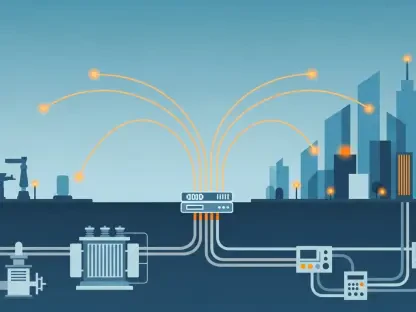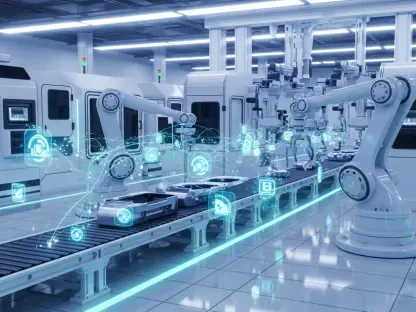In a world racing toward cleaner, greener transportation, could a modest factory in Tamil Nadu hold the blueprint for the future of mobility? Tucked away on an 18-acre plot, Stellantis’ Hosur plant is not just assembling engines and gearboxes—it’s crafting a vision for sustainable innovation that spans five continents. With hydrogen technology on the horizon, this unassuming facility is proving that global automotive revolutions can start in the most unexpected places.
A Hidden Gem in Tamil Nadu
Far from the bustling urban centers, the Hosur plant operates as a silent powerhouse, producing components that fuel vehicles across the globe. Employing nearly 1,500 workers and running three shifts a day, six days a week, this facility churns out 374,000 gearboxes and 300,000 engines annually. These numbers aren’t just statistics—they represent about 5% of Stellantis’ worldwide engine capacity, showcasing the plant’s outsized role in a multinational giant’s supply chain.
What sets this location apart is its reach. Exporting 95% of its production to Europe, the Middle East, Africa, and South America, Hosur serves as a critical node for five major brands under Stellantis’ umbrella, including Citroën and Peugeot. This Tamil Nadu hub isn’t merely a factory; it’s a linchpin in a global network driving automotive excellence.
Why Hosur Stands Out in the Industry Shift
As the automotive sector navigates a seismic shift from traditional engines to alternative fuels, certain facilities emerge as vital testing grounds for change. Hosur stands at this crossroads, balancing current demands for internal combustion engines with preparation for emerging technologies like hydrogen powertrains. This adaptability positions the plant as a key player in addressing climate challenges and meeting consumer expectations for eco-friendly, affordable vehicles.
The significance of this location extends beyond production. It embodies a broader trend of localized manufacturing hubs contributing to worldwide sustainability goals. By integrating advanced practices and maintaining flexibility, Hosur demonstrates how regional operations can influence global strategies, particularly in a market as dynamic as India.
Exploring Hosur’s Diverse Strengths
The scope of operations at this facility reveals a multifaceted approach to excellence. Recognized as a global center for 5-speed and 6-speed manual gearboxes and the 1.2-liter engine, Hosur’s output supports a vast array of vehicles across multiple regions. Its production lines are engineered for versatility, seamlessly handling diverse products without requiring extensive retooling.
A forward-looking initiative is the exploration of hydrogen technology, inspired by Stellantis’ pilot project in Europe. Plans are in place to potentially adapt this innovation for India, contingent on market readiness and cost viability. This proactive stance highlights the plant’s preparedness to pivot toward alternative energy solutions as demand evolves.
Beyond technology, sustainability and community impact are core pillars. With 92% of its energy sourced renewably, the plant slashed 10,622 tons of CO₂ emissions in the current year, targeting 14,000 tons by next year. Meanwhile, a 90% localization rate, supported by 138 regional suppliers, drives economic growth, with exports projected to rise from ₹4,000 crore to ₹10,000 crore in the coming year. Additionally, a workforce drawn from 16 Indian states, with 18% women, benefits from a dedicated training academy, fostering 4,500 direct and indirect jobs in the area.
Insights from the Leadership
Shailesh Hazela, CEO and Managing Director of Stellantis India, paints a clear picture of Hosur’s dual mission. “The goal isn’t just to manufacture components; it’s to build a foundation for whatever the future holds, whether that’s continued demand for traditional engines or a leap into hydrogen,” he explains. This perspective underscores a commitment to flexibility while maintaining current production strengths.
Hazela’s vision is backed by substantial investment, with Stellantis allocating ₹11,000 crore to India’s operations, alongside contributions from 4,000 engineers nationwide working on global projects. On the factory floor, stories of workers mastering complex, multi-product assembly lines through intensive training reveal the human element behind the machinery, blending skill with innovation.
Lessons for the Road Ahead
Hosur’s achievements offer valuable takeaways for industry stakeholders aiming to navigate the evolving automotive landscape. Embracing flexible manufacturing systems, as demonstrated by the plant’s ability to handle diverse technologies on shared lines, can minimize costly overhauls. Companies should assess existing setups for scalability to stay competitive.
Further, building robust local supplier networks, mirroring Hosur’s 90% localization model, can enhance cost efficiency and supply chain resilience. Prioritizing renewable energy and efficiency technologies is another critical step, with the plant’s environmental benchmarks serving as a target for others. Finally, investing in workforce training ensures talent readiness for technological shifts, a strategy evident in Hosur’s inclusive hiring and skill development programs.
Reflecting on the journey of Stellantis’ Hosur plant, it becomes clear that this facility has carved a unique path in the automotive world. Its blend of global reach and local impact offers a model for others to emulate. Moving forward, industry leaders and policymakers could draw inspiration from this Tamil Nadu hub by fostering adaptable infrastructures, deepening regional partnerships, and championing sustainable practices. The road ahead demands bold steps—prioritizing innovation and community in equal measure—to ensure that the future of mobility remains both revolutionary and responsible.









